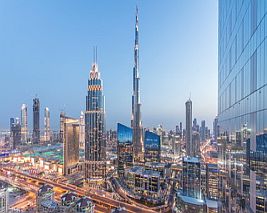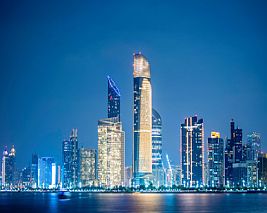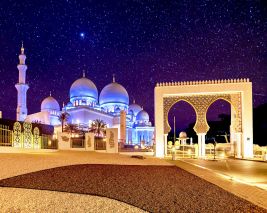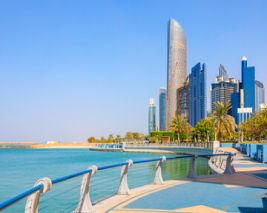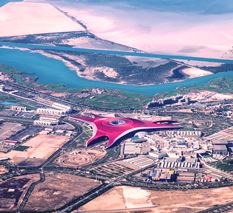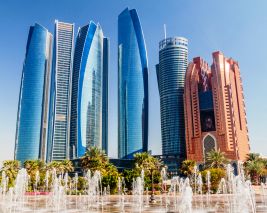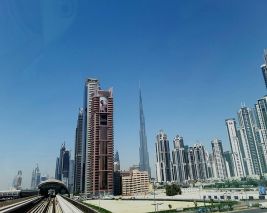Louvre Abu Dhabi is a culmination of an initiative by France and the United Arab Emirates for a cultural collaboration based on the creation of a cultural institution. Born out of an intergovernmental agreement signed on March 6, 2007, between the United Arab Emirates and France, the Louvre Abu Dhabi is the first universal museum in the Middle East which opened on November 8, 2017 and showcases ancient and contemporary works of historic, cultural and sociological significance from around the world and the vibrant heritage of the Arab World.
Location
Cultural District, Abu Dhabi, United Arab Emirates
https://www.google.co.in/maps/place/Louvre+Abu+Dhabi/@24.533832,54.3961413,17z/data=!3m1!4b1!4m5!3m4!1s0x3e5e6724630067f1:0x42191ffb02753df9!8m2!3d24.533832!4d54.39833
Address: Saadiyat Cultural District, Abu Dhabi, United Arab Emirates
Tel: +971 600 56 55 66
Timings
- Saturday to Wednesday (10:00 AM - 8:00 PM)
- Thursday and Friday (10:00 AM - 11:00 PM)
- The museum remains closed on Mondays.
- Last entry to the museum is 30 minutes prior to the closing time.
Highlights
The stunning architecture of the museum inspired by the local heritage and designed by Jean Nouvel whose repertoire includes the Musée du Quai Branly in Paris, Museum Two, Leeum, Samsung Museum of Art in Seoul, South Korea the Reina Sofía Museum in Madrid, the extension to MoMA in New York and the National Museum of Qatar
Impressive ancient and contemporary masterpiece collection on loan from all over the world under one roof.
Inclusions
General admission to the Museum Galleries, Exhibitions, Children’s Museum and public spaces underneath the dome.
Price
- General Admission (age 13 above) – INR 1106
- UAE Teachers – INR 555
- Child (age 13 to 22) – INR 555
- UAE Military – INR 555
- Free access to children below 13 years
Recommended For
- Young budding and adult art aficionados
How to get to Louvre Abu Dhabi
Bus: Public bus route 94, stop in Louvre Abu Dhabi (Saadiyat Island)
Taxi: You can hire any public or private taxi service to Louvre Abu Dhabi
Car: From Abu Dhabi city - From the Zayed Port area (Mena Zayed), follow signs for Yas Island and take Sheikh Khalifa Bridge to Saadiyat Island. Follow road signs off Sheikh Khalifa Highway E12 to the Cultural District to Louvre Abu Dhabi. First exit after the bridge.
From Dubai or Abu Dhabi - (Travelling on E11 Abu Dhabi - Dubai Road): Take Saadiyat Island/Yas Island exit on to Sheikh Khalifa Highway E12 and drive through Yas Highway to the Cultural District on Saadiyat Island. Follow road signs off the highway to Louvre Abu Dhabi.
Free parking available.
About Louvre Abu Dhabi
The Louvre is built on Saadiyat island which is the size of a third of Paris and also houses the Guggenheim Abu Dhabi and Zayed National Museum with the aim to build a complex of art galleries and museums to transform the art scene in the Middle East and propel it on the cultural map.
The architecture of the museum gives the illusion of a weightless floating dome in the sea. Designed by Jean Nouvel, a Pritzker Architecture Prize winner, the museum is inspired by the local traditions and city. The dome of 180 meters in diameters is a complex, geometric tapestry of 7,850 stars, repeated at various sizes and angles in eight superimposed layers covering two-thirds of the museum. As the sun passes above, its rays filter through the gaps in the dome to create an inspiring effect within the museum, known as the ‘rain of light'. This ode to nature and the elements takes its inspiration from the fronds of palm trees of Abu Dhabi. A water channel runs through the museum, that encourages strolling along the waterside. It consists of a cluster of 55 buildings inspired by the low-lying homes of which 23 are devoted to the galleries overlooking both the sea and the Abu Dhabi skyline.
Louvre Abu Dhabi’s museum galleries invite the visitors to see humanity in a new light in twelve inspiring chapters. The works on show comprise of ancient and contemporary artwork from different countries. These exceptional works include a gold bracelet with lion figures made in Iran nearly 3,000 years ago, a superb Virgin and Child by Bellini, an Italian gold and garnet fibula (brooch) from the 5th century BC, paintings by Jordaens, Caillebotte, Manet, Gauguin, and Magritte, a paper collage by Picasso never seen in the public domain, and nine canvasses by the recently deceased American painter Cy Twombly. The collection not only includes pieces from the Middle East and the West but also works such as a Soninke/Djennenke figure from Mali, a dancing Shiva from India, and an octagonal box from China, all bringing influence from other geographical regions. The collection is multidisciplinary and spans every medium: in addition to painting, sculpture, tapestry, goldwork, paper collage, etc., the Louvre Abu Dhabi will also showcase a photography collection and works from the decorative arts, such as a decanter by Christopher Dresser (Glasgow, 1834–Mulhouse, 1904). The pieces come on loan from some of the most world-renowned French museums.
The museum hosts four temporary exhibitions per year. As part of the alliance between Abu Dhabi and France, they will be organized and created by thirteen French museum partners, solely for visitors of Louvre Abu Dhabi.
A designated section of the Louvre, The Children Museum spans across two floors has been conceived for children aged between six and twelve years’ old to inspire the youngsters about art through family-focused exhibitions and interactive workshops in Arabic and English.
Louvre Abu Dhabi is a spectacular opportunity for every art aficionado to soak in the beauty of international masterpieces collected from renowned museums of France.
Interesting facts about Louvre Abu Dhabi
- The Louvre Museum in Paris signed a $525 million agreement to allow the government of Abu Dhabi to use the “Louvre” name for its new museum for 30 years, and $750 million more for ongoing management advice and assistance.
- Louvre Abu Dhabi is 40 metres above sea level and the dome is 36 metres above ground.
- The total weight of the dome is 7,500 tonnes (the same as the Eiffel Tower in Paris)
- French President Emmanuel Macron and his wife, Brigitte were present at the official opening of the museum.








